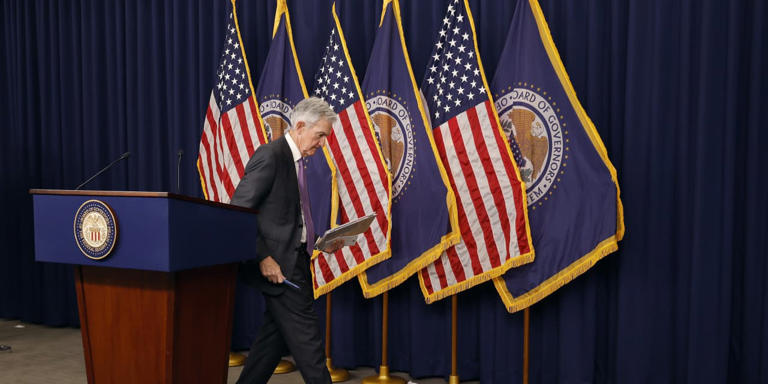In August 2022, Federal Reserve Chair Jerome Powell delivered a nine-minute speech at the annual Jackson Hole Symposium in Wyoming. During this address, Powell’s tone was notably hawkish as he warned investors to brace for potential economic challenges in the pursuit of taming inflation. At the time, his candid remarks served as a stark reminder of the Fed’s commitment to addressing inflationary pressures, albeit at the expense of short-term economic discomfort.
However, the landscape has since shifted. Over the subsequent six months, Powell and his colleagues at the Federal Reserve began signaling a more dovish stance, suggesting a willingness to entertain the idea of interest rate cuts. This shift towards a more accommodative monetary policy stance was met with relief in some quarters, especially among investors who had been bracing for tighter monetary conditions.
Yet, as economists now observe, this dovish sentiment may be on the cusp of reversal. Recent data indicating a resurgence in inflationary pressures has reignited concerns among policymakers. Economists anticipate that Powell will pivot back towards a more hawkish stance in response to these inflationary signals. The aim would be to counteract the easing of financial conditions that accompanied the Fed’s earlier dovish rhetoric.
In adopting a hawkish tone, Powell is expected to emphasize the Fed’s commitment to maintaining its current restrictive policy stance until there is greater confidence in curbing inflation. Some economists suggest that Powell may opt for patience, preferring to delay any definitive moves for a few more months. However, others argue that the urgency of the situation may prompt a swifter response.
Despite market skepticism regarding the likelihood of rate cuts this year, economists foresee the possibility of a rate reduction, possibly as early as September or December. However, expectations are tempered, with most economists anticipating only one rate cut this year, if any.
The upcoming Fed meeting will be pivotal, with several key questions looming. Among these is whether the Fed has effectively addressed the challenge of inflation and when the earliest rate cut might occur. Additionally, concerns about stagflation—a scenario of stagnant economic growth coupled with high inflation—have emerged, posing further challenges for monetary policymakers.
Moreover, the Fed is expected to announce adjustments to its quantitative tightening program during the meeting. This program, aimed at reducing the central bank’s balance sheet, is likely to see a slowdown in its pace as the Fed gradually scales back its asset purchases.
Overall, as the Federal Reserve navigates the complexities of the current economic environment, Powell’s remarks at the upcoming meeting will be closely scrutinized for insights into the Fed’s future policy direction and its response to evolving economic conditions.
